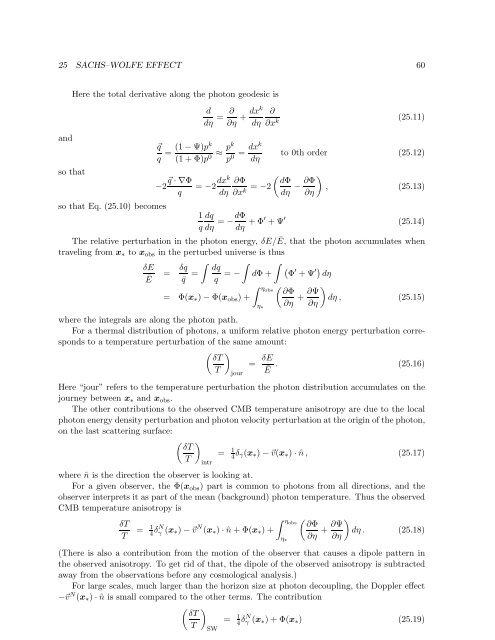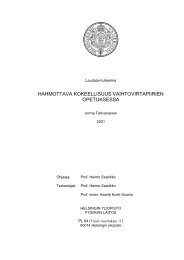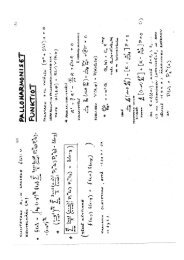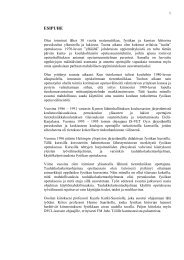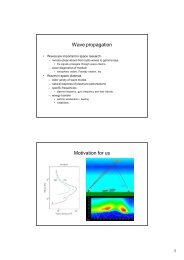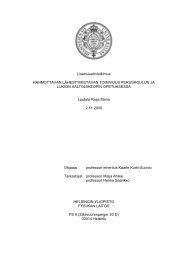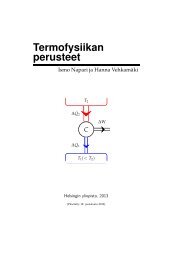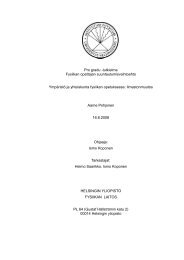Cosmological Perturbation Theory, 26.4.2011 version
Cosmological Perturbation Theory, 26.4.2011 version
Cosmological Perturbation Theory, 26.4.2011 version
Create successful ePaper yourself
Turn your PDF publications into a flip-book with our unique Google optimized e-Paper software.
25 SACHS–WOLFE EFFECT 60andso thatHere the total derivative along the photon geodesic is⃗qqso that Eq. (25.10) becomesddη = ∂ ∂η + dxk ∂dη ∂x k (25.11)(1 − Ψ)pk=(1 + Φ)p 0 ≈ pkp 0 = dxkdηto 0th order (25.12)(⃗q · ∇Φ−2 = −2 dxk ∂Φ dΦq dη ∂x k = −2 dη − ∂Φ ), (25.13)∂η1 dqq dη = −dΦ dη + Φ′ + Ψ ′ (25.14)The relative perturbation in the photon energy, δE/Ē, that the photon accumulates whentraveling from x ∗ to x obs in the perturbed universe is thusδEĒ = δq¯q ∫ ∫ ∫ dq(Φ = q = − dΦ + ′ + Ψ ′) dη∫ ηobs( ∂Φ= Φ(x ∗ ) − Φ(x obs ) +∂η + ∂Ψ )dη , (25.15)∂ηwhere the integrals are along the photon path.For a thermal distribution of photons, a uniform relative photon energy perturbation correspondsto a temperature perturbation of the same amount:( ) δT= δĒ Tjour E . (25.16)Here “jour” refers to the temperature perturbation the photon distribution accumulates on thejourney between x ∗ and x obs .The other contributions to the observed CMB temperature anisotropy are due to the localphoton energy density perturbation and photon velocity perturbation at the origin of the photon,on the last scattering surface:( ) δT= 1T4 δ γ(x ∗ ) − ⃗v(x ∗ ) · ˆn , (25.17)intrwhere ˆn is the direction the observer is looking at.For a given observer, the Φ(x obs ) part is common to photons from all directions, and theobserver interprets it as part of the mean (background) photon temperature. Thus the observedCMB temperature anisotropy isδTT = 1 4 δN γ (x ∗) − ⃗v N (x ∗ ) · ˆn + Φ(x ∗ ) +η ∗∫ ηobsη ∗( ∂Φ∂η + ∂Ψ )dη . (25.18)∂η(There is also a contribution from the motion of the observer that causes a dipole pattern inthe observed anisotropy. To get rid of that, the dipole of the observed anisotropy is subtractedaway from the observations before any cosmological analysis.)For large scales, much larger than the horizon size at photon decoupling, the Doppler effect−⃗v N (x ∗ ) · ˆn is small compared to the other terms. The contribution( ) δT= 1T4 δN γ (x ∗ ) + Φ(x ∗ ) (25.19)SW


